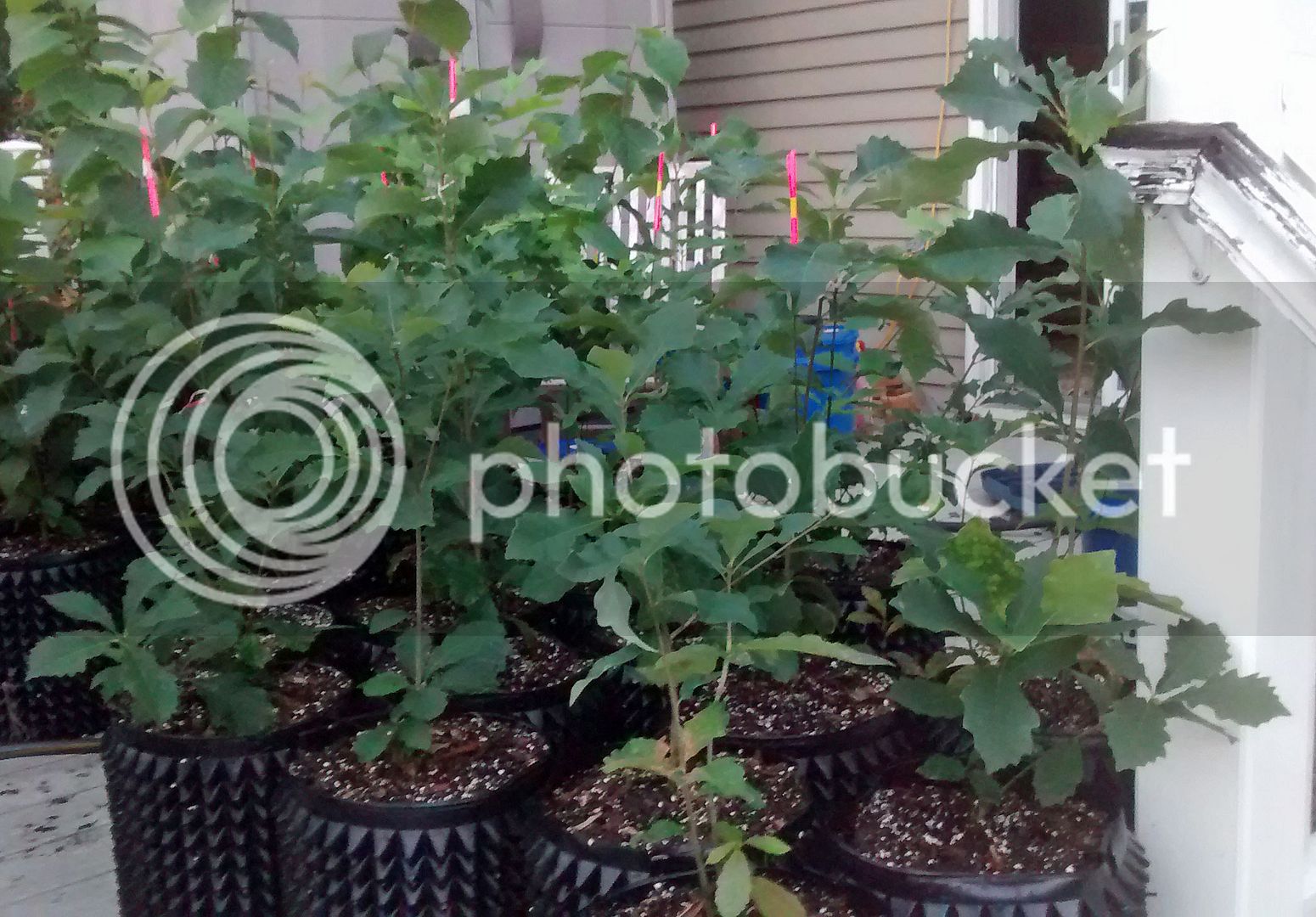I have a handful of seedlings started again this year, and some are starting to look like how my oaks & chestnuts did last winter before they all died...tips browned, leaves yellowing.

I noticed a couple fungus gnats flying around (last year they caused major root damage on most things), so I'm going to treat with some Bti in a couple days when it delivered. I have been watering with Worm compost tea or water when the pots are really dry. I'm using a professional mix (C/20), with a bit of compost and some osmocote mixed in, and they are under some t5 ho bulbs.
So far only dwarf chinkapin oaks seem to be having problems (4 of 6). I also have Chinkapin, Persimmons, and some apples that just germinated. Last year, everything was lost; burr, red, white, am. chestnuts, walnuts, buckeyes... Everything. Nothing had roots left after the gnats!
Thoughts?

I noticed a couple fungus gnats flying around (last year they caused major root damage on most things), so I'm going to treat with some Bti in a couple days when it delivered. I have been watering with Worm compost tea or water when the pots are really dry. I'm using a professional mix (C/20), with a bit of compost and some osmocote mixed in, and they are under some t5 ho bulbs.
So far only dwarf chinkapin oaks seem to be having problems (4 of 6). I also have Chinkapin, Persimmons, and some apples that just germinated. Last year, everything was lost; burr, red, white, am. chestnuts, walnuts, buckeyes... Everything. Nothing had roots left after the gnats!
Thoughts?

